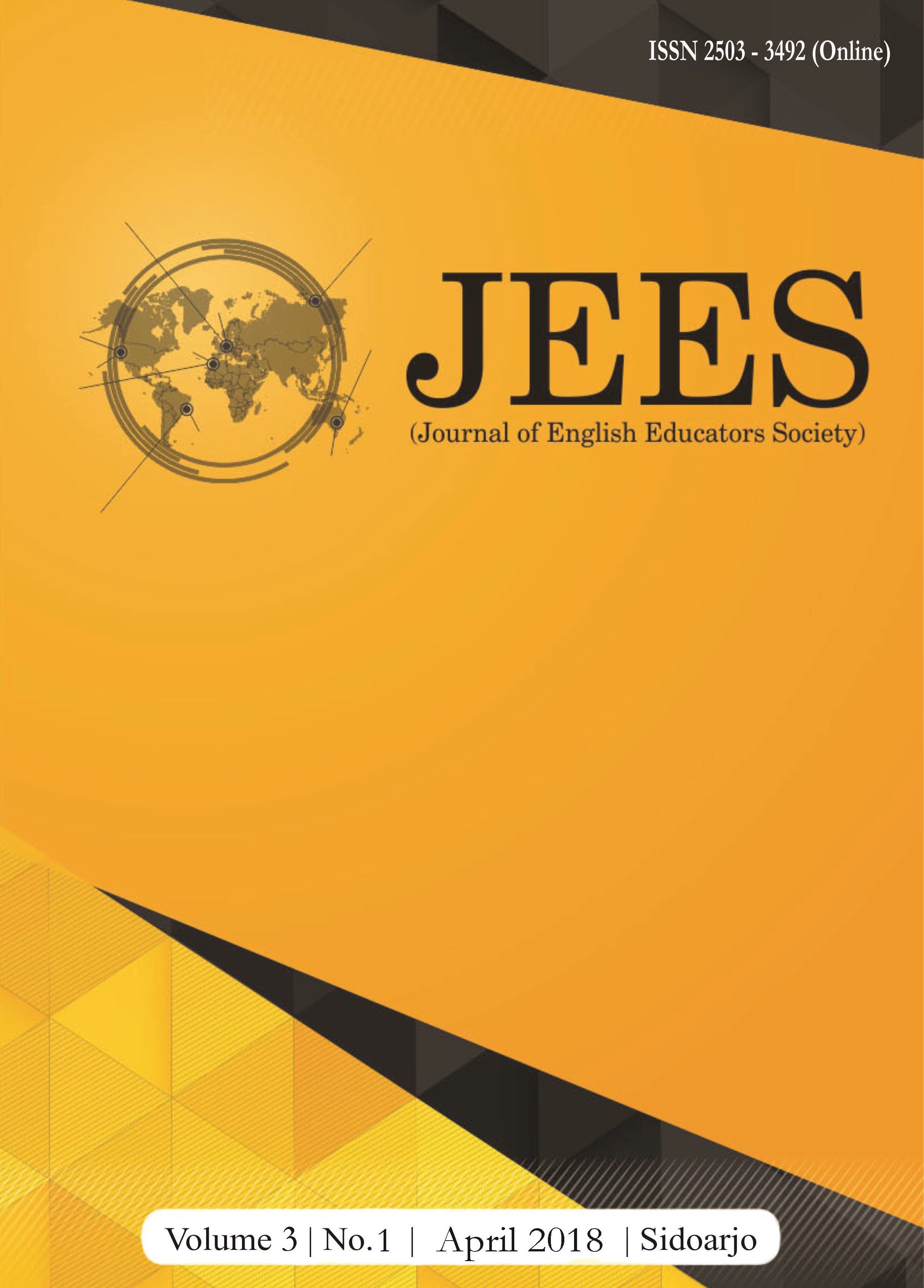An Actantial and Functional Structure Analysis on Mildred Taylor’s Roll of Thunder Hear My Cry
Analisis Struktur Aktansial dan Fungsional pada Mildred Taylor's Roll of Thunder Hear My Cry
DOI:
https://doi.org/10.21070/jees.v2i2.985Keywords:
actantial, functional, Greimas, plot, white supremacist challengeAbstract
To a certain extent, a structural study is good enough to comprehend the very substance of a literary work. Given the above thesis, the researcher attempted to conduct a structural research on Roll of Thunder Hear My Cry (ROTHMC), an African-American novel, using actantial and functional structure analysis. This study aimed at comprehending the basic framework of the story that leads to the revelation of the plot and relations between characters, which indicated the African-American protagonist’s struggle to challenge white supremacy. Method used in the research was descriptive qualitative. Results found that the protagonist was David Logan, an African-American independent farmer that had an ambition to free African-American community from white people’s repressions. It was also found that the ambition and dream of David Logan about African-American freedom and independence and his awareness on the repression toward African-American people (Sender) has made him struggled to make African-American or African-American become a free race with dignity in the United States, where land and other things at the time was dominated by White people. Meanwhile, the functional analysis showed the plot structure of ROTHMC, which was centered on the struggles of David Logan and the family to challenge white supremacy.
Downloads
References
Abrams, M. H. (1999). A Glossary of Literary Terms (Seventh Ed). Massachusetts: Heinle & Heinle.
Burnett, M. (2016). Celebrating 40 Years of “Roll of Thunder, Hear My Cry.” Retrieved September 1, 2017, from https://www.publishersweekly.com/pw/by-topic/childrens/childrens-book-news/article/69436-celebrating-40-years-of-roll-of-thunder-hear-my-cry.html
Hébert, L. (2011). Tools for Text and Image Analysis An Introduction to Applied Semiotics. Retrieved from http://www.signosemio.com/documents/Louis-Hebert-Tools-for-Texts-and-Images.pdf.
Lapan, S. D., Quartaroli, M. T., & Riemer, F. J. (2011). Qualitative Research : An Introduction to Methods and Designs. San Fransisco, CA: Jossey-Bass
Quach, M. (2017). The Complexity of Love and Friendship in Kazuo Ishiguro’s Never Let Me Go: An Actantial Analysis. Retrieved from http://www.diva-portal.org/smash/record.jsf?pid=diva2:1076785
Taylor, M. (1976). Roll of Thunder, Hear My Cry. Toronto: Bantam Book.
Taylor, M. (1979). The ALAN review.The ALAN Review (Vol. 25). Assembly on Literature for Adolescents, National Council of Teachers of English. Retrieved from http://scholar.lib.vt.edu/ejournals/ALAN/spring98/taylor.html
Zaimar, O. (2002).“. Srukturalisme” Makalah Pelatihan Teori dan Kritik Sastra. Jakarta: Universitas Indonesia.
Downloads
Published
How to Cite
Issue
Section
License
Copyright (c) 2017 Heri Dwi Santoso

This work is licensed under a Creative Commons Attribution 4.0 International License.








